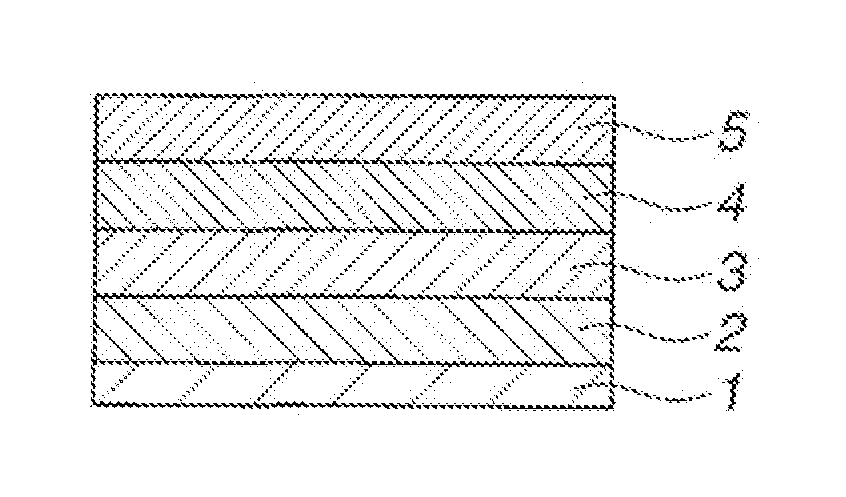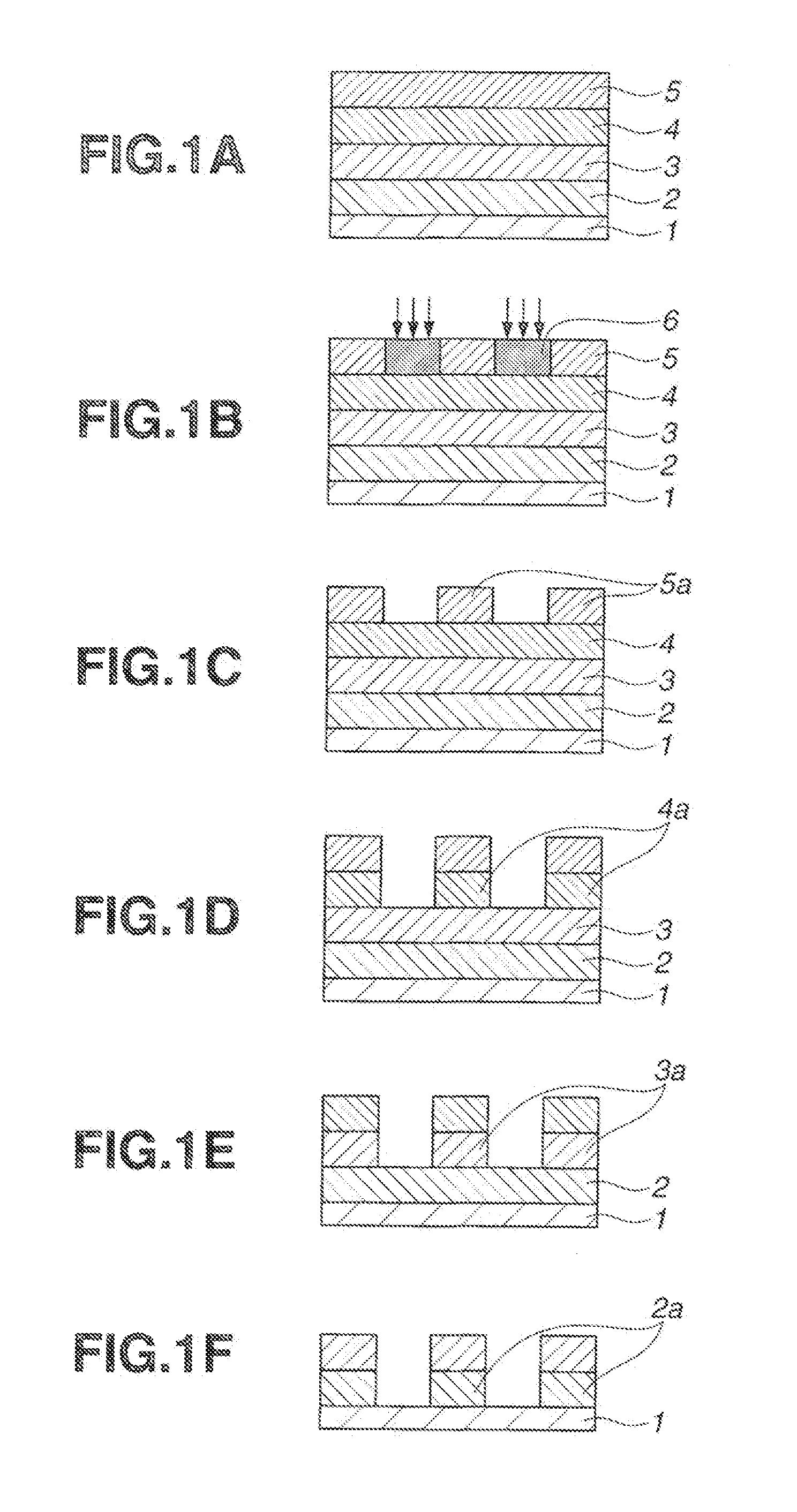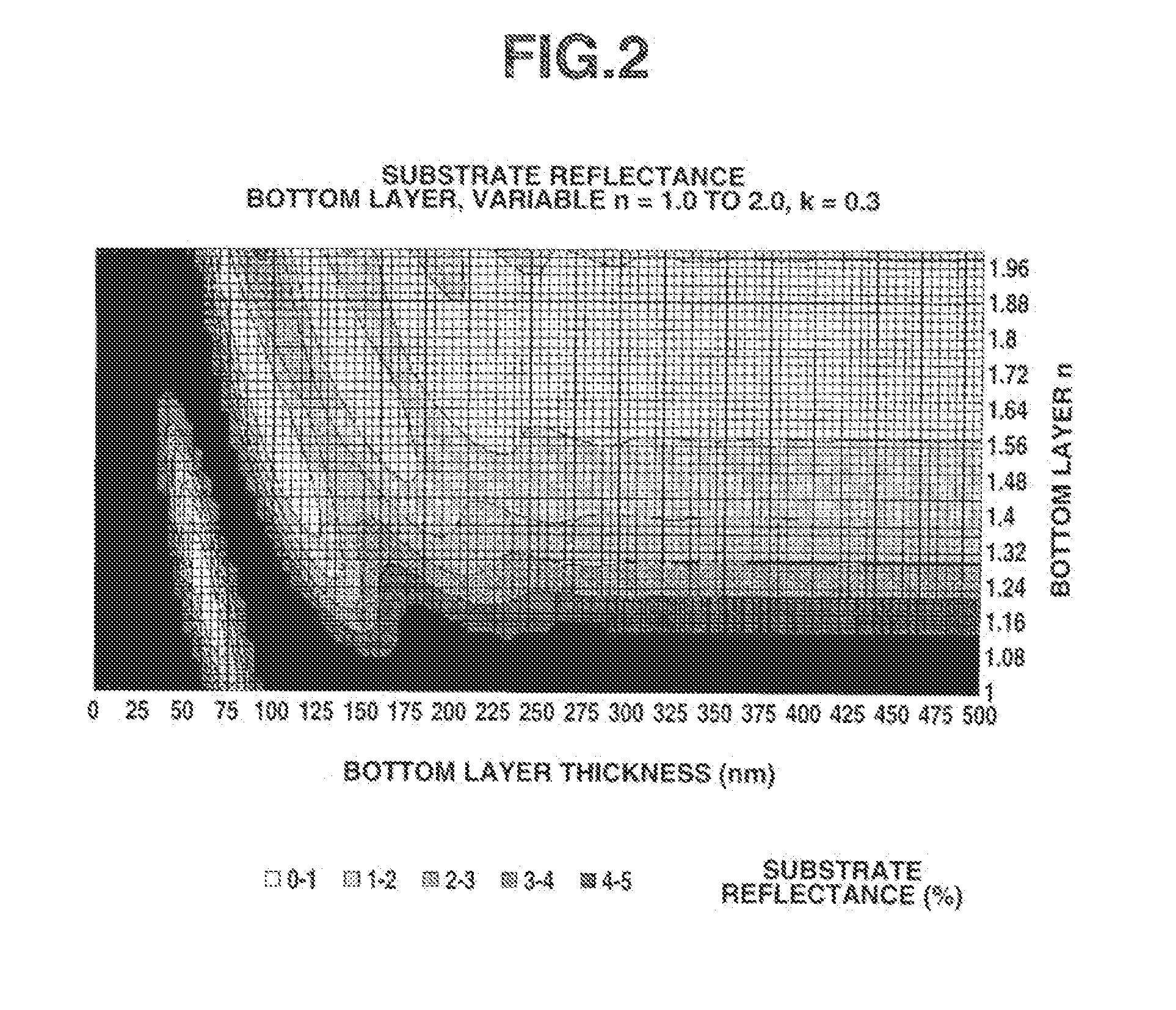Naphthalene derivative, resist bottom layer material, resist bottom layer forming method, and patterning process
a technology of resist bottom layer and resist material, which is applied in the direction of photomechanical equipment, originals for photomechanical treatment, instruments, etc., can solve the problems of increasing surface roughness after etching to a serious concern, weak resistance of acrylic polymer to substrate etching, and approaching the essential limit of resolution determined by light source wavelength, etc., to achieve improved etching resistance, reducing outgassing, and high heat resistance
- Summary
- Abstract
- Description
- Claims
- Application Information
AI Technical Summary
Benefits of technology
Problems solved by technology
Method used
Image
Examples
synthesis example 1
[0134]Synthesis of Naphthalene Derivative (6)
(1-1)
[0135]A three-neck flask was charged with 30.0 g (111 mmol) of 2,2′-dinaphthyl ether, 20.0 g (111 mmol) of 9-fluorenone, and 120 ml of 1,2-dichloroethane, which were dissolved by keeping the flask in an oil bath. After dissolution was confirmed, 0.6 ml of 3-mercaptopropionic acid and 6.0 ml of methanesulfonic acid were added dropwise. Under reflux, reaction was effected for 13 hours. At the end of reaction, the reaction solution was diluted with 500 ml of toluene, and transferred to a separatory funnel where it was washed with water and separated. Water washing was repeated until the water layer became neutral. The organic layer was concentrated under reduced pressure, and 250 ml of tetrahydrofuran (THF) was added to the residue, which was poured to 2,250 ml of hexane, allowing the polymer to crystallize. The crystallized polymer was collected by filtration and dried in vacuum, obtaining naphthalene derivative (6).
Naphthalene Derivat...
synthesis example 2
Synthesis of Naphthalene Derivative (7)
[0150]
[0151]A three-neck flask was charged with 9.94 g (27.7 mmol) of 14-(2-naphthyl)-14H-dibenzola,j]xanthene, 5.0 g (27.7 mmol) of 9-fluorenone, and 30 ml of 1,2-dichloroethane, which were dissolved by keeping the flask in an oil bath. After dissolution was confirmed, 0.6 ml of 3-mercaptopropionic acid and 6.0 ml of methanesulfonic acid were added dropwise. Under reflux, reaction was effected for 23 hours. At the end of reaction, the reaction solution was quenched with 50 ml of saturated sodium hydrogen carbonate aqueous solution, diluted with 120 ml of THF and 30 ml of toluene, and transferred to a separatory funnel where separation was carried out. The organic layer was washed with water and saturated saline, and dried over sodium sulfate. After the sodium sulfate was filtered off, the filtrate was concentrated under reduced pressure, and 70 ml of THF was added to the residue, which was poured to 600 ml of methanol, allowing the polymer to ...
synthesis example 3
Synthesis of Naphthalene Derivative (8)
[0159]
[0160]A three-neck flask was charged with 11.3 g (27.7 mmol) of 14-phenyl-14H-dibenzo[a,j]xanthene, 5.0 g (27.7 mmol) of 9-fluorenone, and 30 ml of 1,2-dichloroethane, which were dissolved by keeping the flask in an oil bath. After dissolution was confirmed, 0.15 ml of 3-mercaptopropionic acid and 1.5 ml of methanesulfonic acid were added dropwise. Under reflux, reaction was effected for 18 hours. At the end of reaction, the reaction solution was diluted with 250 ml of THF and 80 ml of toluene, and transferred to a separatory funnel where it was washed with water and separated. Water washing was repeated until the water layer became neutral. The organic layer was concentrated under reduced pressure, and 70 ml of THF was added to the residue, which was poured to 800 ml of diisopropyl ether, allowing the polymer to crystallize. The crystallized polymer was collected by filtration and dried in vacuum, obtaining naphthalene derivative (8).
Nap...
PUM
| Property | Measurement | Unit |
|---|---|---|
| temperature | aaaaa | aaaaa |
| wavelength | aaaaa | aaaaa |
| size | aaaaa | aaaaa |
Abstract
Description
Claims
Application Information
 Login to View More
Login to View More - R&D
- Intellectual Property
- Life Sciences
- Materials
- Tech Scout
- Unparalleled Data Quality
- Higher Quality Content
- 60% Fewer Hallucinations
Browse by: Latest US Patents, China's latest patents, Technical Efficacy Thesaurus, Application Domain, Technology Topic, Popular Technical Reports.
© 2025 PatSnap. All rights reserved.Legal|Privacy policy|Modern Slavery Act Transparency Statement|Sitemap|About US| Contact US: help@patsnap.com



